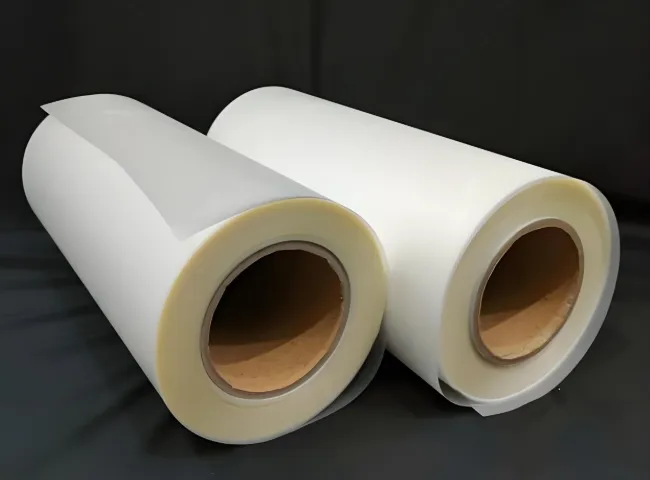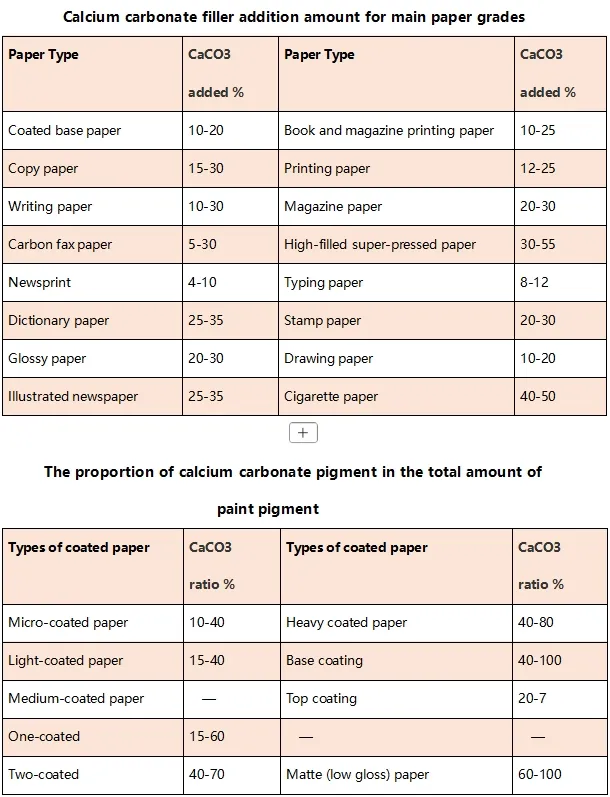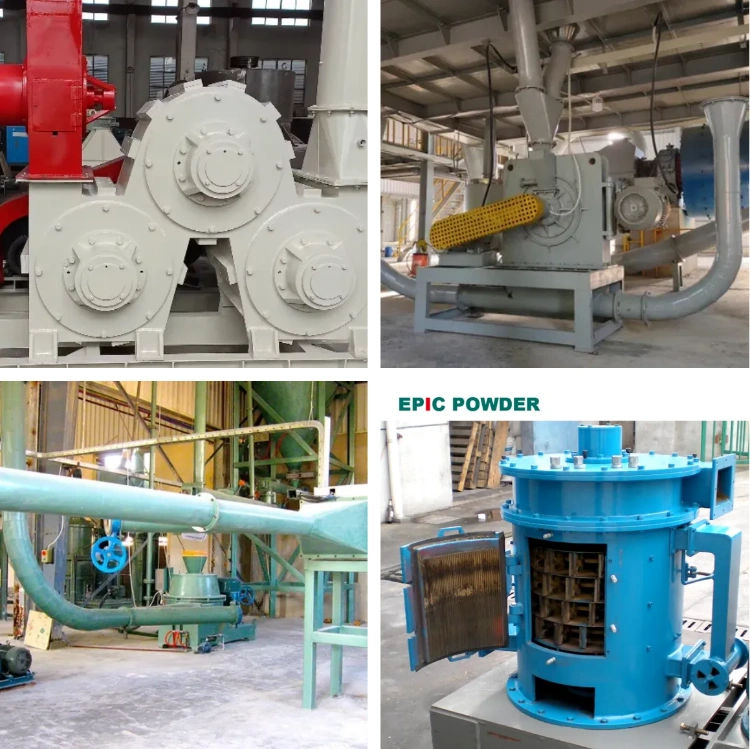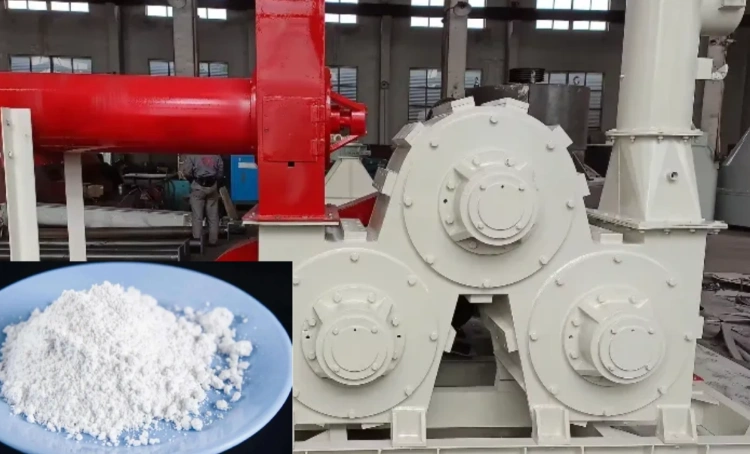Papermaking uses wood, reed, bagasse, straw, wheat straw, cotton stalks, hemp stalks, and cotton as raw materials. It produces pulp and then transforms the pulp into paper and paperboard. Papermaking involves beating the pulp, sizing, adding fillers, and other treatments. It is a complex process to form paper with various properties. Why do we need fillers in papermaking? What are the functions of calcium carbonate, the most widely used filler, in papermaking? Every papermaker has their own answers. For example, adding a certain amount of calcium carbonate fillers increases the number of internal light-scattering interfaces. These interfaces exist between fibers and air, fillers and fibers, and fillers and air. Among these, the refractive index difference between fillers and air is the largest. This significantly enhances the opacity of the paper.
Of course, adding fillers also improves paper brightness, uniformity, and handfeel. More importantly, fillers allow 5% to 30% fiber savings. This results in a significant reduction in production costs.

The first pigment and filler in papermaking – calcium carbonate
Since the promotion of neutral sizing technology, calcium carbonate has been widely used in papermaking. It serves both as a filler and as a coating pigment. Calcium carbonate is abundant and inexpensive. Its fine particle size and high whiteness significantly enhance paper opacity. It increases ink absorbency and makes paper softer and denser. It also improves paper gloss and has minimal impact on physical strength.
As filler
Ground calcium carbonate (GCC) is mainly used as filler in printing paper, writing paper, office paper, and advertising paper, excluding cigarette paper, filter paper, and some special low-basis-weight information papers. In practice, coated paper requires GCC with 325 mesh, whiteness above 92, and CaCO₃ content over 98%. For whiteboard paper and similar products, GCC should have a fineness of 1250 mesh or above, with whiteness above 92 and CaCO₃ content over 98%.
Precipitated calcium carbonate (PCC) can, in principle, be used as a filler in all types of paper. Currently, it is mainly used as a filler for high-grade papers. Examples include cigarette paper, office information paper (such as fax paper, instrument recording paper, inkjet printing paper), low-basis-weight newsprint, and low-basis-weight coated paper.
As coating pigment
Heavy calcium carbonate can be used as a pigment for primer and topcoat to improve the quality and uniformity of printed products. Many characteristics of coated paper also depend on the choice of pigment. Calcium carbonate has high whiteness and good fluidity, and is suitable for preparing high-solid content coatings. It requires less adhesive and can improve the ink absorption of the coating. It can provide good whiteness and color tone and improve air permeability. It is one of the most commonly used coating pigments.
The application of light calcium carbonate in paper coating pigments is mainly to make up for the deficiency of kaolin and heavy calcium carbonate. It is generally used for low-weight coated base paper, high-gloss coated paper and matte coated paper.
Selection of calcium carbonate for papermaking
Heavy calcium carbonate and light calcium carbonate each have their own advantages as papermaking fillers. The choice of calcium carbonate should be determined according to the actual paper production process requirements.
The amount of filler added is mainly determined by factors such as paper type, pulp type, the properties of the filler itself, and papermaking conditions of the paper machine. In order to save plant fiber and reduce production costs, the amount of filler added should be appropriately increased while ensuring the papermaking and use requirements.

Calcium carbonate modification for papermaking

Although calcium carbonate is one of the key fillers in the papermaking industry, unmodified calcium carbonate shows poor compatibility and bonding with pulp fibers. It has low retention rates and can cause interfacial defects, reducing the mechanical strength of paper. Therefore, calcium carbonate requires modification treatments. The main modification methods include chemical coating modification and surface modification.
Chemical coating modification
In the Ca(OH)₂–H₂O–CO₂ system, surface modification of ground calcium carbonate (GCC) is performed. After nano-coating, the crystal cleavage surfaces of the particles become rough, and the edges are passivated. This improves dispersion performance. At the same time, electrostatic attraction exists between the nano-coated GCC and the fibers, forming a network structure within the paper. This generates strong inter-fiber interactions, which in turn improves the tensile index, filler retention, burst index, tear index, and folding endurance of the filled paper.
Surface modification
Nano calcium carbonate can be surface-modified using (KH570). After hydrolysis, the silane coupling agent KH570 produces silanol groups (Si–OH), which condense with hydroxyl groups on the surface of nano calcium carbonate to form stable Ca–O–Si bonds. This achieves an effective chemical grafting. The modified nano calcium carbonate exhibits increased interlayer spacing in its surface crystals, reduced polarity, lower surface energy, enhanced lipophilicity, and improved dispersibility. After coating, optical properties are enhanced, paper surface strength is increased, and hydrophobicity is improved.
Compound calcium carbonate
With continuous advancements in papermaking and powder processing technologies, leveraging the complementary physical and chemical properties of different minerals to enhance product added value and functionality has become a clear trend. In papermaking, mature technologies have been developed to blend calcium carbonate
with minerals such as kaolin, titanium dioxide, pyrophyllite, dolomite, illite, tremolite, talc, and wollastonite to produce composite products. While the types and proportions used in specific formulations vary slightly, the underlying principles are largely similar.
Conclusion
The papermaking industry has a large demand for calcium carbonate fillers and a high level of market acceptance, making it a relatively mature application field. In the future, calcium carbonate for papermaking can focus on developing high-purity and functional products (such as modified types, special morphologies, and well-controlled particle shapes) to seek breakthroughs in the mid-to-high-end market.
Epic powder
Epic Powder, 20+ years of work experience in the ultrafine powder industry. Actively promote the future development of ultra-fine powder, focusing on crushing,grinding,classifying and modification process of ultra-fine powder. Contact us for a free consultation and customized solutions! Our expert team is dedicated to providing high-quality products and services to maximize the value of your powder processing. Epic Powder—Your Trusted Powder Processing Expert !
